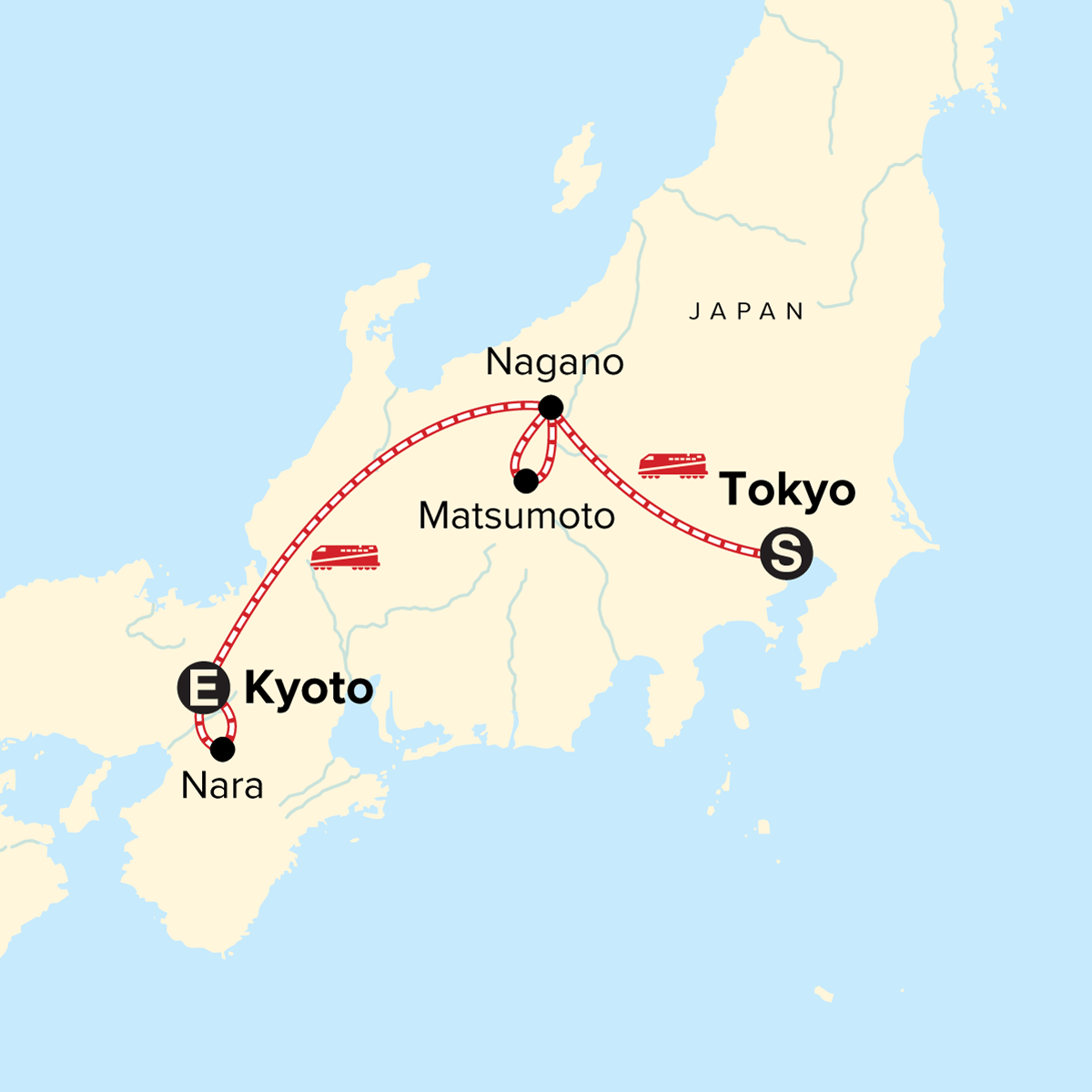10-Nights Japan Family Journey: From Ancient to Modern Times - National Geographic Family Journeys from $5,999
G Adventures
OFFER ID 1532957
Japan Family Journey: From Ancient to Modern Times
Japan is a feast for the senses, from its electrifying neon-lit neighbourhoods to tranquil hilltop temples. Experience an intriguing mix of modernity and tradition as we explore dazzling Tokyo, imperial Kyoto, and the mountain city of Nagano. Wander Buddhist temples and Shinto shrines, practice sumo wrestling and samurai swordplay, and sample miso-infused culinary concoctions. In this fascinating land of anime, snow monkeys, and high-speed trains, there is something to delight every member of the family.
Highlights
Take part in a traditional taiko drumming class, Learn about the health benefits of the Okinawan cuisine, Meet and train with a former sumo wrestler, Watch wild snow monkeys bathe in hot springs, Learn all about miso, Delve into delicious Japanese cuisine while creating your own ramen, Encounter fearless deer in the gardens of Nara Park, Learn about the legendary swordsmanship of the samurai
Accommodation
Hotels (9 nts), traditional Inn (1 nt)
Group Leader
2 CEOs (Chief Experience Officers) throughout
Group Size Notes
20
Meals Included
10 breakfasts, 2 lunches, 2 dinners
What's Included
Your Family Journeys Moment: Traditional Taiko Drumming Class, Tokyo
Your Family Journeys Moment: Okinawa Cooking Class, Tokyo
Your Family Journeys Moment: Sumo Wrestling Class, Tokyo
Your Foodie Moment: Miso Foodie Experience, Nagano
Your Family Journeys Moment: Ramen Making Class, Kyoto
Your Family Journeys Moment: Kembu Masters, Kyoto. Tour of Tokyo including Meiji Jingu Shrine, Asakusa and Harajuku districts. Traditional taiko Japanese drumming class. Sumo class led by a former wrestler. Sleep in a ryokan (traditional Japanese inn) and enjoy a kaiseki dinner. See wild snow monkeys at the Jigokudani Monkey Park. Visit the Buddhist temple of Zenko-ji. Visit Matsumoto castle. Visit a local miso experience. Walk through the Nishiki Market and Gion Geisha District with your CEOs. Visit the iconic Fushimi Inari Taisha Shrine. Take part in a ramen making class. Tour Nara including visits to the Todaiji Temple, Kasuga Grand Shrine and the Naramachi district. Visit the famous Kiyomizu-dera Temple. All transport between destinations and to/from included activities.

10 nights from $5,999 per person
Vacation Details
* This departure has been designated a guaranteed departure by the operator, meaning that the minimum number of guests has been met, although still subject to weather and other conditions.
Dossier Disclaimer
The information in this trip details document has been compiled with care and is provided in good faith. However it is subject to change, and does not form part of the contract between the client and the operator. The itinerary featured is correct at time of printing. It may differ slightly to the one in the brochure. Occasionally our itineraries change as we make improvements that stem from past travellers, comments and our own research. Sometimes it can be a small change like adding an extra meal along the itinerary. Sometimes the change may result in us altering the tour for the coming year. Ultimately, our goal is to provide you with the most rewarding experience. Please note that our brochure is usually released in November each year. If you have booked from the previous brochure you may find there have been some changes to the itinerary. VERY IMPORTANT: Please ensure that you print a final copy of your Trip Details to review a couple of days prior to travel, in case there have been changes that affect your plans.
Itinerary Disclaimer
While it is our intention to adhere to the route described below, there is a certain amount of flexibility built into the itinerary and on occasion it may be necessary, or desirable to make alterations. The itinerary is brief, as we never know exactly where our journey will take us. Due to our style of travel and the regions we visit, travel can be unpredictable. The Trip Details document is a general guide to the tour and region and any mention of specific destinations or wildlife is by no means a guarantee that they will be visited or encountered. Aboard expedition trips visits to research stations depend on final permission. Additionally, any travel times listed are approximations only and subject to vary due to local circumstances.
All fares are quoted in US Dollars.
Reference this number when contacting our agency so we may better serve you. Also keeping this number handy will allow you to locate this document again quickly.
